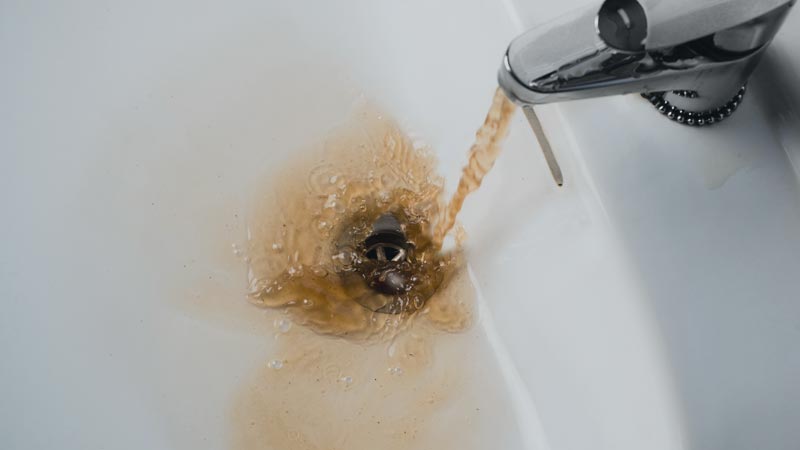Discoloured Water

Discoloured water is typically caused by naturally occurring minerals (primarily iron and manganese) in the water. These minerals, which are heavier than water, settle in water mains under normal operating conditions. When water flow in the watermains increases (due to events such as watermain breaks, firefighting, high seasonal demands, watermain flushing, etc.), the settled minerals can loosen and flow into the water, causing discolouration.
Though discoloured water may look displeasing, it does not pose a water quality or health concern. Discolouration is often temporary and should dissipate on its own.
Frequently Asked Questions
Is discoloured water dangerous?
Though discoloured water may look and taste unpleasant, it generally does not pose a water quality or health concern. If you plan to use the discoloured water for cleaning and basic household use, you may want to boil the water first as a safety precaution.
While discoloured water is safe to use, you may want to wait until the water is clear before doing laundry or using appliances that use water (toilet, sinks, etc.) to prevent potential staining and damage.
How to resolve discoloured water?
If discolouration occurs, run the COLD water at one faucet for approximately 10-20 minutes. If the tap you are using has an aerator, remove the aerator first. You should see the water clear. If the water does not run clear, turn off the tap, wait 30 minutes and try again. If the discolouration lasts for more than 2-3 hours, please contact us.
Do not use the hot water faucet as this will draw discoloured water and sediment into your hot water heater/tank.
How long should discoloured water last?
In most cases, discoloured water is temporary and will dissipate on its own fairly quickly. It can take anywhere from a few minutes to an hour for water to clear. If the discolouration lasts for more than 2-3 hours, please contact us.
Only my hot water is discoloured. What do I do?
InnServices’ supplies cold water to its customers. If only hot water is discoloured, this indicates a private plumbing issue, most likely within the hot water tank. You may need to flush the hot water tank. If the problem persists after flushing the tank, you may wish to contact a plumber.
Only one tap has discoloured water. What do I do?
If discolouration occurs, run the COLD water at one faucet for about 10-20 minutes. If the tap you are using has an aerator, remove the aerator first. You should see the water clear. If the water does not run clear, this could indicate an internal plumbing issue. Contact a plumber.
My neighbours aren’t experiencing discoloured water, but I am. What do I do?
If only your home is experiencing discoloured water, this is most likely an internal plumbing issue. You should contact a plumber.
How can I prevent discoloured water?
If you are looking to improve the quality of your home’s water and prevent discoloured water, there are a few systems you can look into.
- Water Softeners – Salt based water softeners use a process called Ion Exchange to reduce the hardness of your water, as well as removing calcium, magnesium and iron (minerals that can cause brown water).
- Sediment Filters - Sediment filters are designed to capture and remove sand, silt, dirt, and rust from water which can improve the clarity of water.
For more information on home water systems and other options you may have, you will need to contact plumbers and/or private water companies.
